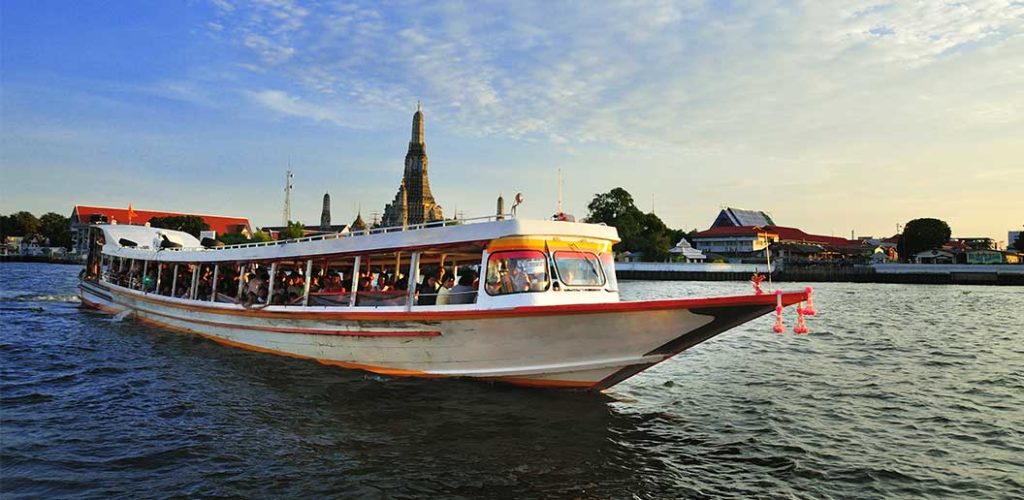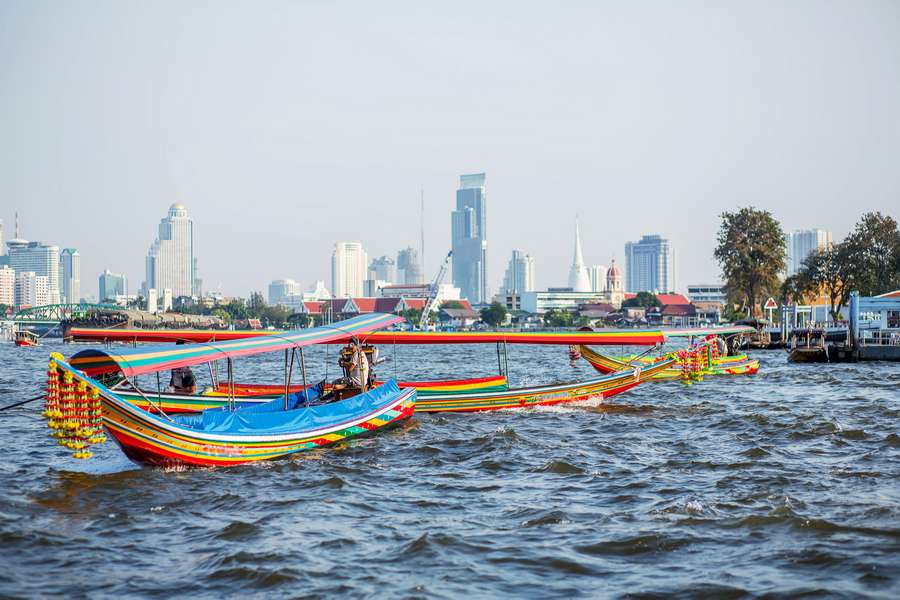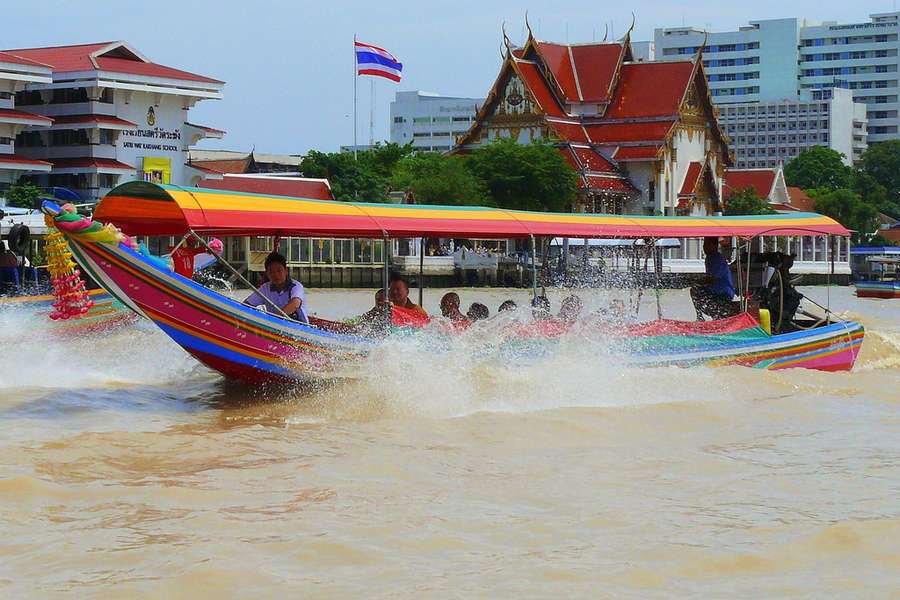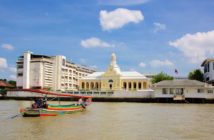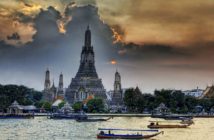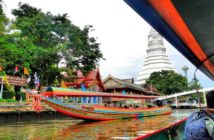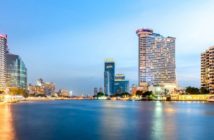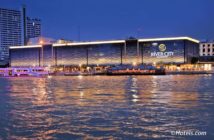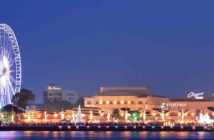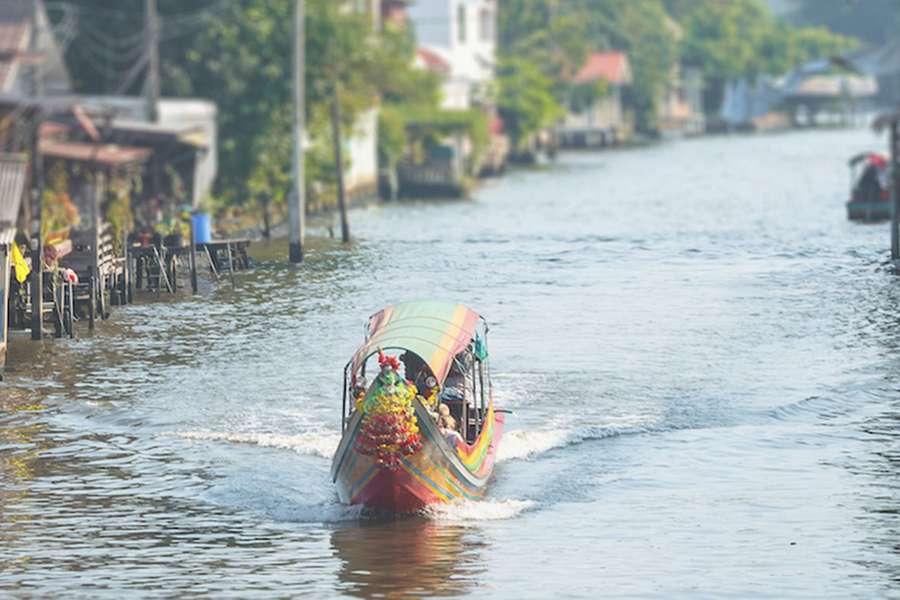 The capital’s most famed river is one that has made its history throughout the centuries. Serving as a crucial outpost for many to make a living out of and travel the banks up and down the city, it is as crucial to the heart of Bangkok as the people who live in it. Without it, commerce would have been naught along the centuries.
The capital’s most famed river is one that has made its history throughout the centuries. Serving as a crucial outpost for many to make a living out of and travel the banks up and down the city, it is as crucial to the heart of Bangkok as the people who live in it. Without it, commerce would have been naught along the centuries.
It is one of the reasons the capital was moved from the ancient city of Ayutthaya and remains a crucial part of Thai identity years down the road.
Bangkok’s most famed body of water has always formed the bloodstream of the city and its people. For many years, it has given all that is required to local people to live and offer a space for past generation to lay down their first settlements, to succeed, both back in the day and in today’s Bangkok.
Relevantly named Mae Nam Chao Phraya, the stream was the first source of income of many city dwellers. In Thai, Mae Nam is a way of saying river with Mae implying mother and Nam water. The Thai illustrious and honourable title Chao Phraya in Thai signifies Grand Duke. The two terms together really mirror the adoration Thais find for the river that dissects the capital.
Bangkok follows its foundation back to the fifteenth century when it started as a little town under the administer of the first capital of Siam, Ayutthaya. Early pilgrims picked the first site on account of the land’s fruitfulness and the water’s wealth of fish. Because of its key area close to the waterway’s mouth, the settlement soon developed in size and significance by filling in as a Customs station.
In 1767 after the fall of Ayutthaya to the Burmese, King Taksin moved the nation’s Wealth to Bangkok on the western banks of the stream in the zone now known as Thonburi. In 1782 King Rama I, finding the eastern banks as more resourceful to the population, established what is known today as Bangkok and praised the event by building a portion of the world’s most flabbergasting structures and points of interest, for example, Wat Phra Kaew and the Grand Palace.
Waterways, also known as khlongs, be they natural or made to fill the demand, started to give Bangkok its identity and contributed essentially to the cityscape and the occupants’ way of life. Bangkok soon earned the appellation “Venice of the East.” Bangkokians at that point went by its conduits and regularly met in the now world famous floating markets – a genuinely one of a kind lifestyle. Prominent Westerners, for example, Joseph Conrad and Noel Coward later identified the Chao Phraya as one of their most loved rivers in the Far East.
Like all flourishing urban areas worldwide, Bangkok has changed much since its introduction to the world. The city has extended a long way past the stream’s banks. Be that as it may, local people still live, work, and play along the Chao Phraya. In excess of 50,000 individuals still utilize its ships each day. Moderate freight ships bearing load move inflexibly upstream. Youngsters still bathe in water – now inevitably having turned brown due to pollution.
The banks’ scene and lifestyle has developed vertically with high rise hotels like the Millennium Hilton and condominiums like The River. Lodgings and townhouses sit beside sanctuaries, places of worship and metro structures that look nineteenth century European while yards away a wooden sampan offers noodle soup or dried squid to hungry waterway specialists. It is this juxtaposition of quiet and disarray, present day and customary, religious and mainstream, revolting and heavenly, remote and indigenous that makes the Chao Phraya so suggestive.
Like every single urban waterway, the destiny of the Chao Phraya is interwoven with the city. King Rama I, who nicknamed it the River of Kings, already set the precedent, and it is the thing that gives Bangkokians their identity today.
The Chao Phraya starts in the north of Thailand where the Ping, Wang, Yom and Nan streams converge to shape an estuary at Paknam Pho District in Nakorn Sawan Province. It streams southwards through Uthai Thani, Chai Nat, Sing Buri, Ang Thong, Ayutthaya, Pathum Thani, Nonthaburi and Bangkok before flowing into the Gulf ofThailand in Samut Prakarn.

Previously, the regions that are now near the famed Thammasat University that take after the banks of the waterway – extending descending to Wat Arun Ratchawararam – were really one real estate parcel without the river coursing through as it does in modern times.
Amid the years 1534-1546 Somdet Phrachai Rachathirat, the King of Ayutthaya, ordered that a trench be burrowed to make an alternate way in the territory of the tightest neck of land, beginning from the mouth of Bangkok Noi channel to the mouth of Bangkok Yai waterway. He named it Khlong Lat (Bangkok alternate route channel).
The Chao Phraya River in modern life is still the most crucial river for the general population of Thailand who base their agricultural and farming endeavours on the fauna it harbours, such as fish and other. The waterway is an imperative transport connection for the transportation of teak and rice to Bangkok. Local people have made the banks their home. It is no big surprise that the waterway is viewed as the bloodline of Thais.
Today, local people living along the Chao Phraya River banks keep up a credible way of life. The stream additionally assumes an imperative part in Thailand’s energetic celebrations, for example, Loy Krathong, held each November when thanks are communicated to the lord of water, and Songkran – the Thai New Year festivities.
The advent of modern transportation gave the Chao Phraya River a newer usage, with large cargo ships now floating through its open waterway. They, like most of the commerce throughout the capital’s history, come from all over the world.
For the commuter, public transport such as the BTS Skytrain makes it convenient to travel along it and across it. Many find the riverbank along the Shaphan Thaksin stop a focal point to cross over by boat or ferry, which is now a prevailing and classic attraction amongst the tourist and local populations alike.
A host of high class luxury hotels have made it a niche market for every brand of traveller, with spaces such as Asiatique, where people can go from night shopping and massage hopping to dinner and river cruising. There too to one can make their way to old Chinatown district, where there are a host of different cultural intertwines, with old architectural designs welcoming the new and the fresh.
Scores of restaurants have opened up in that area, from the those attempting to emulate what would have been the life of a Chao Phraya River fisherman back in the day, to those taking to more modern traditions. Major commercial developments such as ICON SIAM and Concept malls such as Lhong 1919 have also set up shop. As we featured in our magazine in January, it draws a new meaning to what it means to be part of the river and at the same time be part of modernity.
As a whole, the Chao Phraya River is a gem of the Bangkok life, making it an essential place, just like back in the day, to make of the city a thriving and bustling port of entry and way of sustenance.


